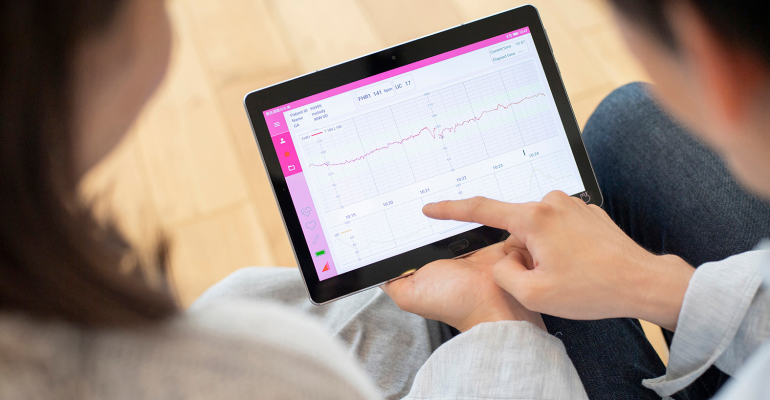Physician shortages and rural locations are some of the challenges which can create barriers in accessing prenatal care. Multiple prenatal visits are required to input basic foetal measures, which adds to the patient's burden.
Inadequate access to quality healthcare during pregnancy is the biggest factor behind sub-Saharan Africa accounting for more than two-thirds of the world’s maternal deaths.
Remote monitoring with a self-administered foetal monitoring solution might drastically reduce some of the present care hurdles. Beneficial in high-risk pregnancies, including women with gestational hypertension and gestational diabetes as well as low-risk pregnancies, it can improve prenatal healthcare compliance, provide access to prenatal healthcare for women in rural locations, and coordinate treatment amongst many doctors.
Remote monitoring devices
Abdul Latif Jameel Health and Melody International announced a partnership in October 2021, signing a memorandum of understanding (MOU) for the distribution of Melody's remote 'Melody I Mobile Fetal Monitor iCTG,' a cloud-based mobile wireless foetal monitor platform, across selected markets in Asia, the Middle East, and Africa, covering a territory of over 1.9 billion people.

Remote monitoring devices, such as the Melody i Mobile Fetal Monitor, have integrated platforms that include a foetal heart monitor (with an in-built speaker in the transducer that also functions as a foetal doppler); a uterine contraction monitor (external tocometer); and a smart tablet device to view real-time data and connect to the internet.
The weight of the transducer is comparable to that of conventional cellphones, and one hour of charging offers up to 6 hours of monitoring capability.
Melody's iCTG is already in use in several Japanese hospitals after being approved by the Pharmaceuticals and Medical Devices Agency (PDMA). It has been used in a variety of clinical settings, including as a partial substitute for periodic medical checkups for pregnant women living in remote or isolated areas, as well as for frequent and long-term monitoring of high-risk pregnancies that require regular tests, such as those involving mothers of advanced childbearing age or those at risk of premature labour.
Clinicians can effectively monitor these situations by analysing data via the internet while the mother wears the device at home.
This remote screening capacity enables for prompt action in the event of an emergency, reducing the chance of an unexpected or emergency birth.
Moreover, in critical situations, a collaboration between emergency transport services and hospitals enables doctors to access real-time data to monitor the foetus' condition while in transit and the receiving hospital to prepare a treatment plan prior to arrival, increasing the likelihood of a positive outcome. The solution is cost-effective, portable, convenient, and paperless, with data sent to a tablet display or smart device.
Akram Bouchenaki, Chief Executive Officer, Abdul Latif Jameel Health (image, right), commented: “Abdul Latif Jameel Health believes that this innovative and intuitive monitoring system will be of great value in the accelerating accessibility to perinatal monitoring and improving the outcome for millions.
In collaboration with Melody International, we aim to reduce the rate of perinatal deaths and continue our mission to create a more inclusive healthcare environment in Asia, the Middle East, and Africa.”
Routine use of remote monitoring could significantly reduce healthcare use and the strain on pregnant women traveling to the clinic for prenatal monitoring. True remote monitoring using a passive device that can consistently display foetal ECG and maternal ECG has the potential to improve access to obstetrical services, especially for women in rural locations and those with obstetrician-gynaecologist shortages.
Furthermore, wireless, remote monitoring allows a pregnant woman to be mobile throughout labor, potentially improving the woman's labor experience, reducing labour time, and reducing the risk of caesarean birth.


